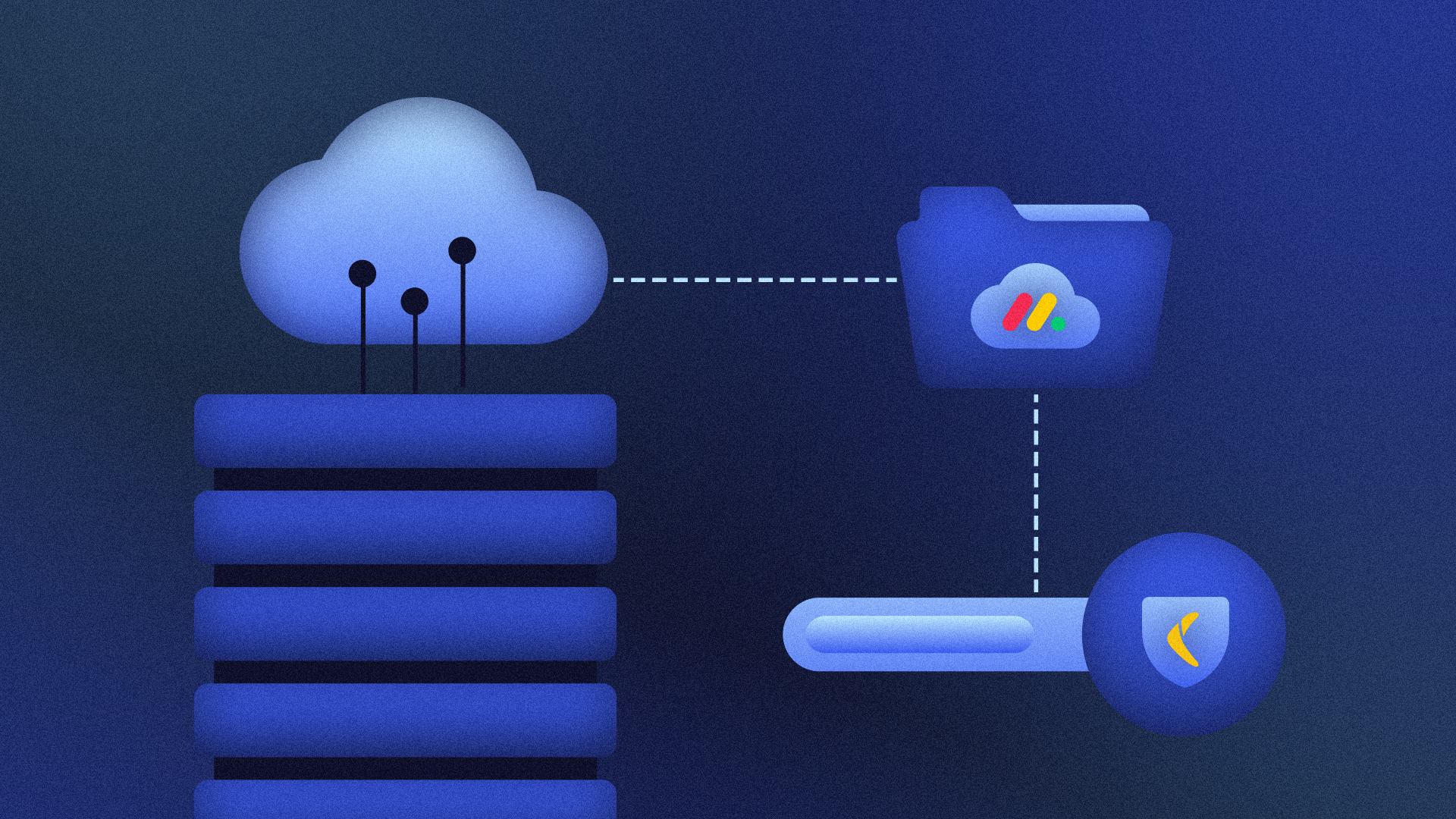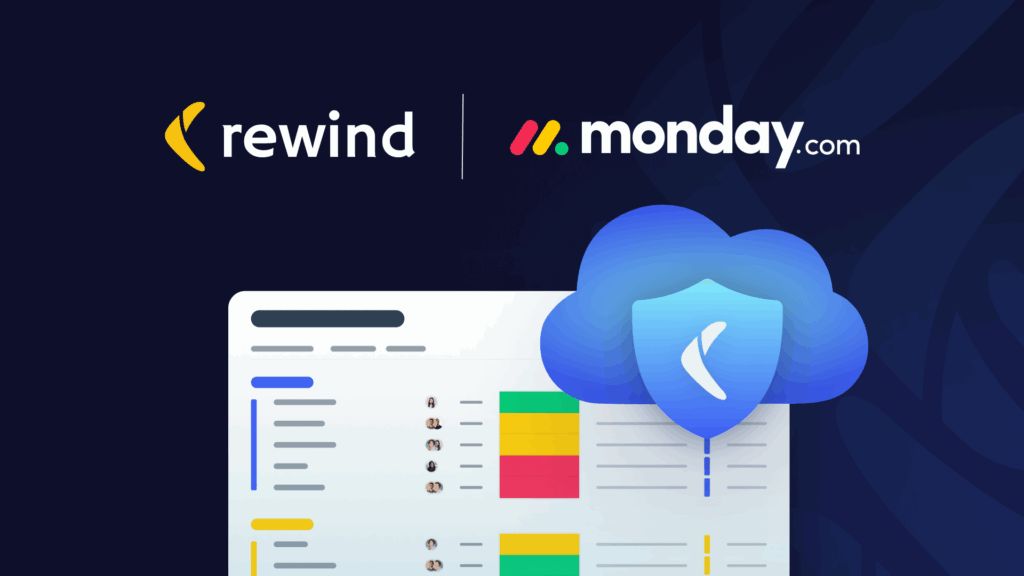FFWD
- monday.com is not just software, it is critical infrastructure that organizations rely on to work together.
- Downtime has a measurable financial and operational impact. Human error and other factors can cause data loss and downtime.
- monday.com offers undo and versioning for some items, but true data resilience requires a more intentional approach to monday.com backup and data recovery.
“If it’s not in monday.com, it didn’t happen.” Can you relate?
For many teams, monday.com isn’t just another productivity tool. It’s the heartbeat of their business.
monday.com is where projects are planned, campaigns are tracked, and deliverables, timelines, and approvals all live and work together in one workspace.
When an organization loses data in monday.com, the impact is immediate and widespread. Tasks disappear. Automations break. Entire workflows stall. Every department, from marketing to product to finance, feels the ripple effect.
And most teams never think about data loss until it happens.
While monday.com is a powerful collaboration tool offering undo and version history for some items, true data resilience in monday.com—and a clear path to restore data when it’s lost—requires a more intentional approach.
Organizations that rely on monday.com know it’s business-critical infrastructure. Protecting the data that powers monday.com in your organization is just as important as the work it helps your teams deliver.
Why monday.com is mission-critical
Every organization may use monday.com a little differently, but they all have one thing in common: monday.com is the system that everything else depends on.
A few real-world examples:
- McDonald’s uses monday.com to coordinate operations across marketing, logistics, and project management. The result? A 25% reduction in project management timelines and 1,224 hours saved per month.
- Zippo Manufacturing leveraged monday.com Work OS to transform how they manage product development. They achieved an 8× ROI and saved 6,970 hours monthly by automating and centralizing workflows.
- Country Road Group combined real estate, design, and store planning workflows into one connected dashboard and saw 25% efficiency gains across 150+ projects.
- Citizens Bank built an entire loan-processing workflow for Paycheck Protection Program (PPP) loans on monday.com—over a single weekend—and used dashboards to give leadership transparency into approval pipelines.
These monday.com case studies clearly demonstrate that monday.com isn’t a mere project management tool. It’s the operational backbone for cross-functional teams like marketing, operations, sales, and finance, connecting workflows and data across the organization.
Automations, workflows, and AI integrations are part of what makes monday.com so powerful. When a single automation links multiple boards, losing the data that automation relies on can have an immediate, disruptive, and far-reaching impact across departments. In other words, building data resilience in monday.com is about more than protecting data; it’s about ensuring your organization runs efficiently.
The unseen risks of data loss in monday.com
It’s a monday.com admin’s worst nightmare: A board is accidentally deleted, a workspace owner removes an old item not thinking about the interdependencies, human error causes an automation to overwrite critical data at scale.
In a platform built for speed and collaboration, it only takes a few clicks to cause a major disruption.
Here are some of the most common ways users could lose monday.com data:
Human error
Most incidents start here.
An employee deletes a board, archive, or column without realizing it’s tied to active workflows. Even a simple cleanup effort can remove critical context like project timelines or client deliverables.
Because monday.com is collaborative by design, the same access that fuels productivity can also make accidental deletions more likely…and more catastrophic.
Overwritten or corrupted data
As teams grow, monday.com evolves with them; new boards, automations, and dashboards appear constantly. But when someone edits shared boards or restructures fields, older data can be overwritten or permanently lost.
Unlike files on a local drive, there’s no “undo” for every kind of change.
Permission or ownership missteps
Ownership changes, offboarding, or admin role transfers can lead to unexpected data gaps.
If a departing employee owns key boards or automations, their removal can break entire workflows. Once those links are gone, restoring them isn’t always straightforward.
Platform-side incidents or outages
Even the most reliable cloud platforms experience occasional downtime, sync issues, or service incidents. When that happens, the risk isn’t just temporary access loss—it’s the potential for unsaved or corrupted data during recovery windows.
Hidden time delays
The real danger is often invisible.
Teams may not realize data is missing until weeks later, long after trash bins have cleared or history limits have passed. By the time the problem surfaces, the information is gone for good.
Losing monday.com data doesn’t just mean rebuilding a few boards. It can mean losing the operational memory of your business, like decisions, dependencies, and context that teams rely on to deliver results every day.
What data loss really costs
When it comes to data loss, the cost isn’t just the lost information. It’s the lost time, the lost productivity, and the cascading impact across every team that depends on it.
According to a report from Ponemon Institute, downtime from data loss costs businesses an average of $9,000 per minute. That’s more than $500,000 per hour. It’s not just lost revenue that contributes to that heady number. There’s a high human resource cost too as work is interrupted and teams pull together to contain the damage.
Even minor disruptions in monday.com can translate into measurable business impact:
- Lost productivity: If a 50-person team loses access to its project boards for a single day, assuming an average loaded hourly rate of $60, that’s $24,000 in productivity loss before factoring in rework or missed deliverables.
- Delayed revenue: For teams managing client pipelines or campaigns in monday.com, downtime can directly delay billing or fulfillment, impacting top-line performance.
- Rebuilding effort: On average, businesses spend 8-24 hours manually rebuilding deleted or corrupted boards, often without full recovery of original dependencies.
- Compliance risk: If deleted records include audit trails, approvals, or historical data, organizations may fall out of alignment with regulations such as SOC, ISO 27001, or GDPR, exposing them to potential fines or failed audits.
The hidden cost is the time lost to uncertainty. Teams don’t know what’s missing, or how far back the damage goes. Rework hours multiply, confidence drops, and project velocity stalls.
In a fast-moving business, even a few hours of lost monday.com data can ripple into days of recovery. Multiply that across departments and the real cost becomes exponential.
How to avoid data loss and accelerate data recovery in monday.com
monday.com includes useful features like version history and a trash bin that help users recover from small mistakes, but these tools weren’t designed to handle large-scale data loss or long-term data protection.
Here’s where the limitations appear:
- Short retention windows: Deleted items and boards are only recoverable for a limited time.
- Partial restores: Boards, automations, and dependencies don’t always come back together.
- Same-environment storage: Any backup data remains within monday.com’s infrastructure, offering no true off-site copy.
- Limited historical visibility: Once older data falls out of history, it’s gone for good.
These safeguards are valuable for everyday corrections, but not enough for true data resilience. The fix is simple: add a dedicated backup layer that provides:
- Automated daily backups of your entire monday.com environment.
- Granular restores for individual items, boards, or complete accounts.
- Off-site redundancy that aligns with the 3-2-1 rule for SaaS backups.
- Extended retention to meet compliance and audit requirements.
This ensures that when something goes wrong, you can restore your monday.com data quickly, completely, and confidently.
Protect the platform that keeps your business moving
Imagine if McDonald’s lost the project data driving its campaigns, or if Zippo’s product development boards disappeared overnight. The cost wouldn’t just be measured in hours of downtime; it would be measured in missed deadlines, lost momentum, and disrupted customer experiences.
That’s why data protection shouldn’t be an afterthought. It should be an extension of operational excellence.
Adding a dedicated backup layer ensures that your monday.com data—every board, update, and workflow—can be restored quickly and completely when it matters most.
Because the companies that rely most on monday.com are often the ones that can least afford to lose the data it holds. And with the right protection in place, they never have to.

 Rewind">
Rewind">


